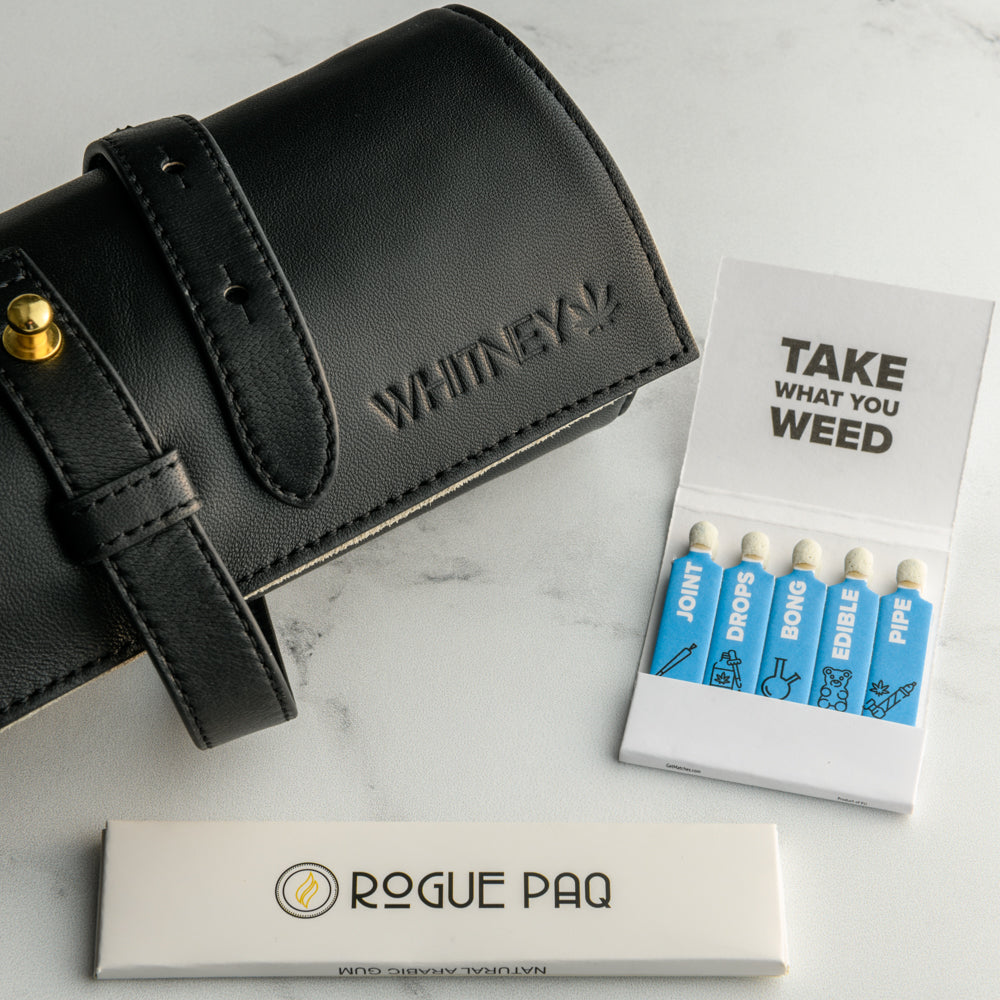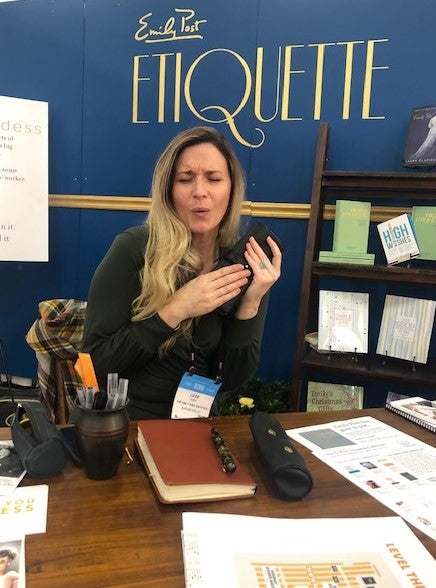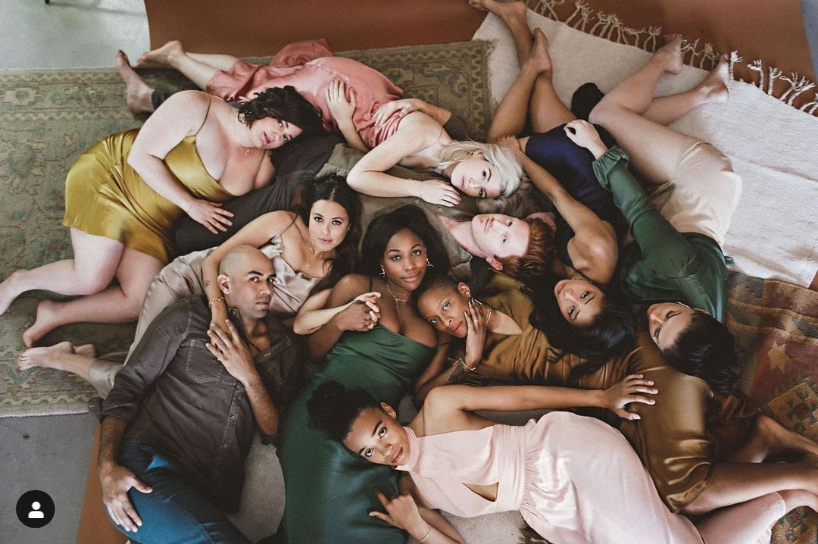
Canna Conversations: Jimmy Smith, Photographer and Founder of The Activity
You've told us that you love our product photography. The guy behind most of our captures? Jimmy Smith, Photographer and Founder of @theactivity We've been working with Jimmy for quite some time and find his journey with cannabis to be supremely compelling. Read our interview below to hear how cannabis continues to heal him.
All images courtesy of Jimmy Smith
Rogue Paq (RP): How did the members of your household regard cannabis when you were growing up?
Jimmy Smith (JS): We all pretty much agreed that it was a drug for criminals. This was a distinct issue in my household because when I was 13, I started skateboarding with kids who smoked a lot of pot. From that moment forward, my family was on alert that I would not adopt it into my life and honestly, at 13 I wasn’t interested.

RP: We believe that cannabis is a healing plant with the potential to replace prescription medications in the proper application. Tell us about how cannabis has played a part in your overall health.
JS: Cannabis has been critical to my mental health. I had a near death experience in Croatia in 2011. I was on a wave runner when a storm mounted and I got lost at sea for about 7 hours. It was a pretty traumatic 7 hours from which I developed PTSD. I didn't experience significant side-effects until about a year later when I began struggling with depression, severe anxiety, panic attacks, and social withdrawal. Then came alcohol abuse as a way of trying to cope which, of course, only exacerbated my symptoms. I got myself to a point around 2015 when I realized that I needed to quit drinking in order to get better and so I started to get interested in cannabis. As I began to experiment with cannabis, the up-front benefit was that it began to ease my depression; And then about a year in, it also started to combat my anxiety. I should note that in late 2015-early 2016 I was between jobs and lost my health benefits. This was a terrifying time because I was taking prescription medication to deal with depression, anxiety, and OCD. I was so scared because I honestly didn’t believe that cannabis would be enough to deal with my mental condition but, to my surprise, the benefits far surpassed any prescription medication I had been taking. As time went on, the benefits continued to increase as I learned to avoid Indicas (which seemed to trigger my paranoia and depression) and to rely on pure Sativas which lifted and focused me. I also became aware of dosage and how making adjustments to intake could really boost benefits. From that time period, I’ve never looked back. I am so grateful for this plant that quite literally has saved my life. I say that with no exaggeration nor hesitation.
I had a near death experience in Croatia in 2011. I was on a wave runner when a storm mounted and I got lost at sea for about 7 hours. It was a pretty traumatic 7 hours from which I developed PTSD.
RP: What is your ritual?
JS: My favorite ritual happens now because I love fall and winter in Arkansas and the colder weather plays into my ideal way to partake. I get to put on my old-man sweater which is a chunky cardigan style piece that I love, and I pull out my antique tobacco pipe. I then start a fire in my wood burning stove and sit in my smoking chair. That’s the stage I love to set. Then I sit and smoke. The perfect time is right at sunset- it’s a meditative period where I reflect on the actions of the day past and formulate a strategy for the following day. I also use the time to contemplate any problems I may need to solve personally or professionally. It’s the most productive period of my day because I’m setting myself up for success.

RP: What are the contents of your ritual?
JS: I have three large grinders from Phoenician Engineering. I grind my sativa and indica separately in each of two of the grinders. Then I have a beautiful chrome plated grinder which I only use for special occasions. It’s like getting out the fine china and the crystal stemware.
I also have a series of Boston brown glass bottles in which I store my grind - they are the perfect delivery system of ground flower into my antique pipe. Exactly the right size.
I have my Rogue Paq Ritual Case, of course, but I like to look at it on my bookshelf and currently keep it strictly for photographic purposes. I can’t yet let myself use it into oblivion. That day is coming though.

RP: What is your favorite strain and why?
JS: I honestly don't remember strain names but I love pure Sativas. I’m a rather introverted person and Indicas put me too deeply into an existential state. Sativa is energetic and uplifting and it makes me want to learn and create. I use it as a vehicle for staying in the moment. Sativas are perfect for when I want to achieve a “flow state'' where my subconscious and conscious meet and where I can create intuitively without overthinking things. In short, it’s a productivity tool when I need to get the most done.
Jimmy Smith
RP: As a photographer, what inspires you?
JS: I’ve always been passionate about the moving image, film, and still photography but through my journey with PTSD I’ve come to use photography (and cannabis) as a recovery tool. PTSD robbed me, for a long time, of my sense of wonder and my appreciation for beauty. I remember a turning point at which I traveled to Big Sur and I was still very depressed and starting to crawl out of that hole. On that trip, I pulled out my camera and photographed what I was experiencing and I recall thinking to myself how beautiful it was. That was a defining moment because prior to that, I couldn’t remember having a positive thought. I was elated to realize I was even still capable of feeling that way and I vowed to chase that feeling. Photography has allowed me to dive back into the world and see it a different way and to rediscover beauty and through that, my vitality as a human. It’s given me a way to revisit pain points in my life and address them head-on. For instance, just two days ago I finally stepped back into the ocean again since my experience in Croatia. When I got close to the water I experienced extreme panic but I photographed myself stepping in and I held onto a good-luck stone and I did it. I stepped back out and felt nothing short of triumph.
Big Sur
RP: What's your favorite book and why?
JM: The Teachings of Don Juan by Carlos Castenada. It purports to document the events that took place during an apprenticeship with a self-proclaimed Yaqui Indian Sorcerer, Don Juan Matus from Sonora, Mexico between 1960 and 1965. A highlight in the book is the passages devoted to peyote and its psychological benefits. It has changed my perspective of reality.
Sativas are perfect for when I want to achieve a “flow state'' where my subconscious and conscious meet and where I can create intuitively without overthinking things. In short, it’s a productivity tool when I need to get the most done.

RP: What photographers inspire you?
JS: Bert Stern - I love his product photography. He is credited with the creative renaissance in advertising. He motivated me to get into product photography. As a side note, he photographed the last sitting with Marilyn Monroe.
Joe McNally - one of the last photographers hired by Life Magazine. He was a portrait photographer but thought like a photojournalist. He motivates me because of the way he teaches. Everyone on the planet should watch Inspiration from Joe McNally.
Eugene Smith - he is the most influential in my life as a photographer. He was a combat photojournalist wounded gravely in Okinawa after which he took no photographs for two years. Ultimately, it’s my interpretation that he dealt with his PTSD and wounds with his camera. The facts are that one day he took his two kids outside and grabbed his camera and photographed them walking out of the trees (below). After that he continued with photography. That moment, for me was photographing Big Sur. It just changed everything.





